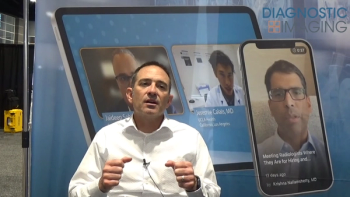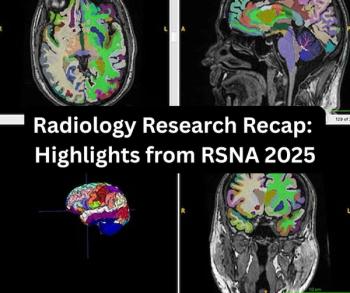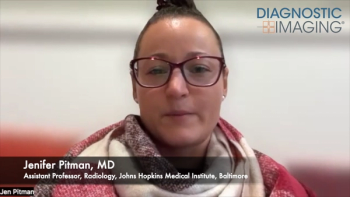
Fuji installs baker’s dozen portable CRs
FDA clears proton therapy positionerRIS Concepts extends speech optionsSoftware promises to boost cardiac scans
Fuji installs baker's dozen portable CRs
Fujifilm Medical Systems USA has delivered 13 of its FCR Go portable digital x-ray systems to the Los Angeles County + University of Southern California Healthcare Network. FCR Go uses a phosphor-based detector and built-in computed radiography reader to produce digital radiographs at patient bedsides. LAC+USC opened in November 2008 as one of the largest acute care hospitals in the U.S.
FDA clears proton therapy positioner
The FDA has cleared a robotic system designed for positioning patients for proton therapy, an alternative to standard radiation for patients with cancer. The positioner, developed by ProCure and Ion Beam Applications in collaboration with Forte Automation Systems, will be installed first at the ProCure Proton Therapy Center in Oklahoma City, which is scheduled to open this summer. The computer-controlled robotic system decreases the time needed to position patients for proton treatments while offering greater freedom of motion than is currently available on other systems, according to ProCure. It combines commercially available robotic subsystems, which makes it cost-effective and easy to maintain, with custom-designed arms to meet the specific needs of patient positioning in proton therapy. A unique dual coupler system is attached at the end of the wrist of the robot arm that is used to attach different devices to the positioning syste, such as a patient table, chair, or test phantom.
RIS Concepts extends speech options
Radiology information systems from RIS Concepts can now connect not only with the widely used Dragon medical speech recognition engine but also with IBM ViaVoice and Nuance SpeechMagic applications. The extended options allow radiologists to retain personal voice files created on disparate systems, which often have been fine-tuned through years of use, when they upgrade to RIS Concepts products.
Software promises to boost cardiac scans
UltraSPECT plans to add Xpress3.Cardiac to its U.S. portfolio of software packages designed to speed data acquisition or improve image resolution with gamma cameras. The company currently offers Xpress.Cardiac and Xpress/Xact.Bone, which can cut nuc med image acquisition time in half or double resolution. Xpress3.Cardiac, which will be distributed in the U.S. exclusively by Cardinal Health, promises even better performance, cutting scan times to three minutes for stress exams and to less than five minutes for rest exams. Cleared about a year ago by the FDA, Xpress3.Cardiac has been in routine clinical use at a limited number of luminary sites in the U.S. and Europe. Among these are St. Luke's-Roosevelt Hospital in New York City, Mayo Clinic, Duke University Medical Center, Baptist Hospital of Miami, and Atlanta Heart Specialists.
Newsletter
Stay at the forefront of radiology with the Diagnostic Imaging newsletter, delivering the latest news, clinical insights, and imaging advancements for today’s radiologists.




























